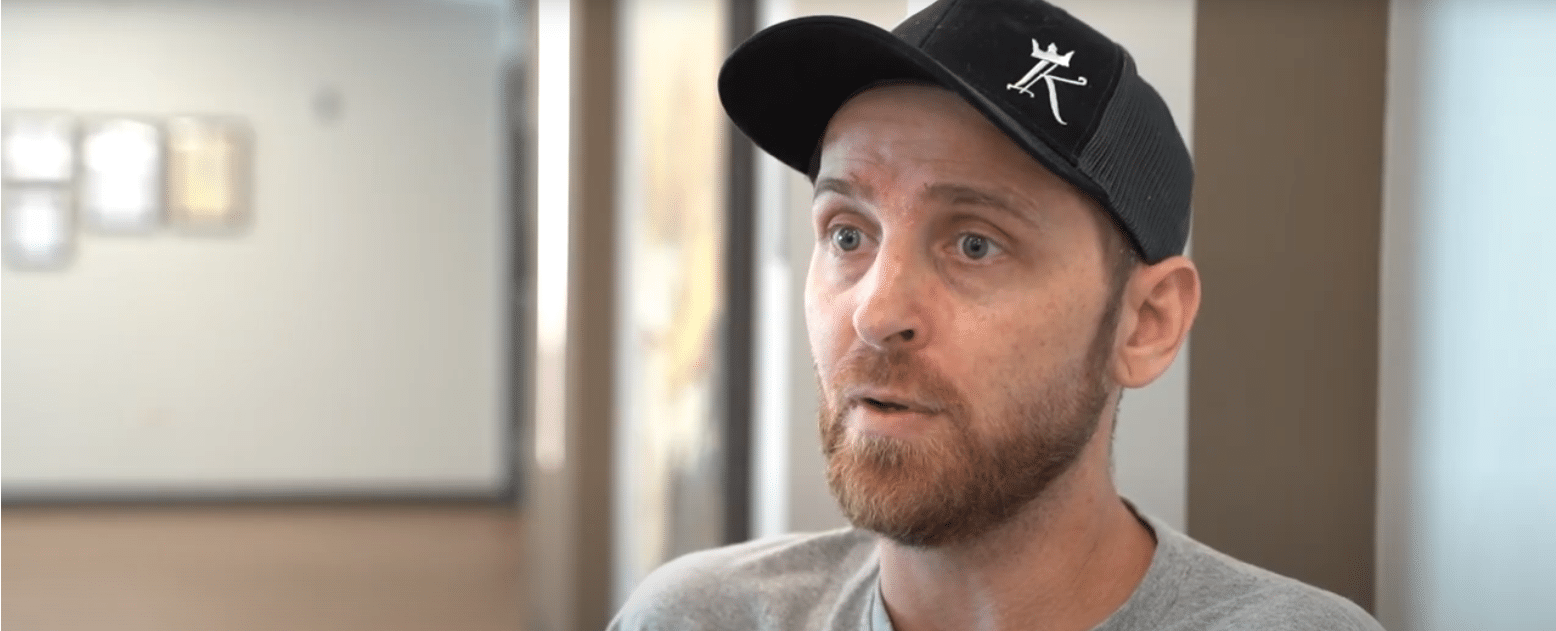It started like any other day. Thirty-seven-year-old Bryan Abbe, from Neodesha, Kansas, could never have imagined that by the end of his work day, he wouldn’t be able to walk or move any of his body.
“It didn’t seem real,” Bryan said. “I mean, something you never would expect to happen in your life, that’s when I started realizing more and more thinking in my head that I can’t walk. I finally realized I can’t move at all.”
He was diagnosed with a rare neuroimmune disorder.
“He had a condition called transverse myelitis, which affected his spinal cord,” Dr. Adam Kafka, Madonna’s medical director, said. “A situation where the body sort of ends up attacking itself.”
After nearly a month-long stay in the intensive care unit at Wesley Medical Center in Wichita, Kansas, Bryan arrived at Madonna’s specialized spinal cord injury program.
“He couldn’t support himself,” Sarah Synek, OT, a Madonna occupational therapist, said. “He couldn’t sit on the edge of a bed, and we really needed two people to even transfer him from his bed to his chair or from his mat to his chair.”
Determined to regain his independence, Bryan worked hard in daily physical and occupational therapy sessions. No stranger to practice and patience, Bryan stayed motivated as his Madonna care team incorporated his favorite hobbies into his therapies.
“I got to play basketball in a wheelchair,” Bryan said. “I got to go bowling. I got to go grocery shopping. I learned how to swim again. But that wasn’t even the best part, I got to do my favorite hobby, corn hole. First sitting in my chair to eventually standing on my own.”
At a very young age, Bryan proved himself to be a dedicated athlete, so his therapists made therapies competitive, and tested his skills using specialized technology. He trained on the Proprio to improve his balance and core strength. Meanwhile, Bryan practiced his independence on the road in his occupational therapy sessions with the Driving Simulator. Additionally, the Dynavision, a light board that lets the patient interact with a flashing light that blinks across a screen, to help train the brain, let Bryan’s care team evaluate his neurological function.
“We started the Dynavision probably the first week that he was here at Madonna,” Synek said. “He was [at} wheelchair level, but after a couple of weeks, we started doing the Dynavision from standing. And not only did he hit the criteria that we needed for some of those return to driving, readiness skills, he actually exceeded that exponentially.”
Thanks to the Lokomat, a robotic treadmill that helps an individual simulate a walking-like movement pattern, and the Lite Gait body weight support harness, Bryan started walking. Soon he could walk fully on his own using Madonna’s ICARE By SportsArt, a motorized elliptical, which helped improve his balance and coordination. Now, Bryan has walked through Madonna’s front doors and returned home to his family and community.
“We’re all like friends and family here,” Bryan said “I feel blessed where I ended up here.”






